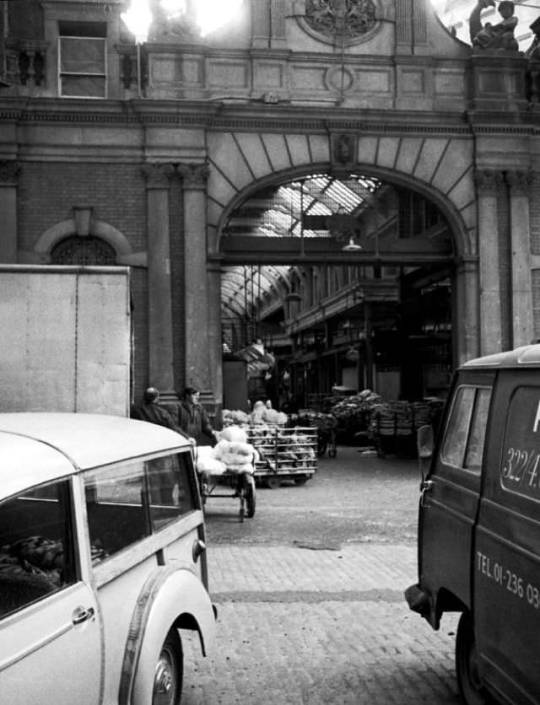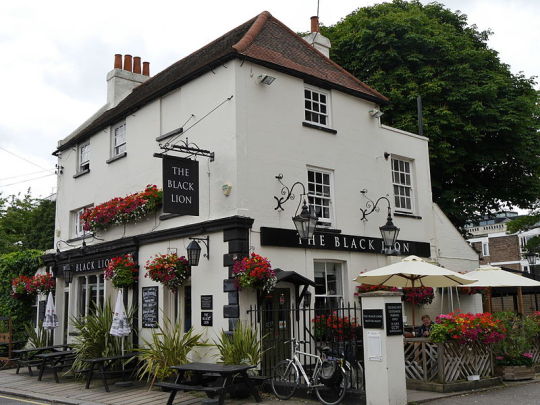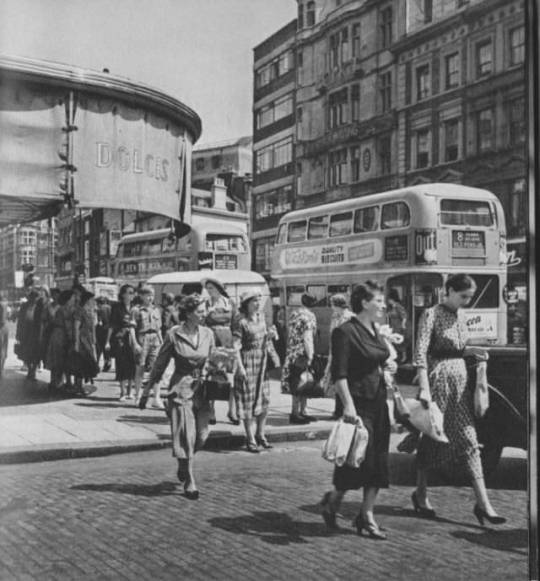#LondonHistory
Text

London, England 🇬🇧
#london#londonlife#londonphotography#londonhistory#londonarchitecture#londontravel#londondiaries#londonlove#uk#england#kingssgaurds#travel#inglaterra
312 notes
·
View notes
Text




Life of London in the early 1970s Through the Lens of Norman Craig
7 notes
·
View notes
Photo

London is a city that never gets old, a place where history coexists with the present at every corner. #london #london🇬🇧 #londoncity #londonhistory #motivaiart #ai #aiart #aiartwork #art #artist #aiartist #artlover #aiwork #aiimages #text2image #technology #aitechnology #nft #nftart #motivation #motivational #motivationalquotes #midjourney #midjourneyart #stablediffusion https://www.instagram.com/p/Cp-TT_dI2vo/?igshid=NGJjMDIxMWI=
#london#london🇬🇧#londoncity#londonhistory#motivaiart#ai#aiart#aiartwork#art#artist#aiartist#artlover#aiwork#aiimages#text2image#technology#aitechnology#nft#nftart#motivation#motivational#motivationalquotes#midjourney#midjourneyart#stablediffusion
2 notes
·
View notes
Text
Hammersmith: A Haunting, A Hoax, and a Tragic Hunt
The calendar page had barely turned over to the new year and twenty-nine-year-old Francis Smith was experiencing one of the worst times of his life. He sat before the court positively morose for what he had done. On that awful night of January 3rd 1804 he immediately surrendered to the constable, deeply regretting how it all unfolded. Now all he could do was plead for mercy and understanding. After all, at that moment he truly believed he was acting on behalf of the entire borough when he shot the gun.
Over the course of twelve months the West London district of Hammersmith fell into a state of apprehension and deep fear. It all began when a man committed suicide by slashing his own throat and, in a move that went against all rule and beliefs, he was buried in the consecrated ground of the churchyard ensuring that his soul would never find peace. It was after this controversial burial that people began to report seeing a figure, draped in a white shroud, appearing throughout Hammersmith. Surely this had to be the tormented spirit of the man who committed suicide and was then committed to sacred ground. What other explanation could there be? If the incidents remained as ghostly sightings it may have never progressed beyond a simple haunted tale, but the encounters got violent, and then people allegedly began to die. A brewer’s servant named Thomas Broom later told how he was walking through the churchyard with a friend one night when he was suddenly grabbed violently by the throat. It was only when his friend turned to see what happened that he claimed the specter “gave me a twist round, and I saw nothing; I gave a bit of a push out with my fist, and felt something soft, like a great coat.” Another pair of stories alleged that an elderly woman and a pregnant woman both encountered the malevolent spirit on separate occasions near the churchyard and they were both so terrified that when they returned home they could not leave their beds, dying there a few days later.

An image of the Hammersmith Ghost attacking a woman. Image via The Newgate Calendar, Part III (1826), http://www.exclassics.com/newgate/ngconts.htm.
The people of Hammersmith were scared but some were also skeptical, believing this was not a ghost, but a cruel and devious human being. Ghost or human, either way their reign of terror had to be stopped. At this point Hammersmith did not have a formal police force so in order to protect the people some of its own citizens began patrolling the streets after dark. One of these men guarding the night was Francis Smith, armed with a shotgun, and another was night watchman William Girdler. On the night of January 3rd at approximately 10:30pm Girdler ran into Smith and told him that later that night he would meet up with him and they would look for the ghost together. Girdler knew what he was looking for after all, only a few days earlier on December 29thhe saw the ghost and chased him down but the figure disappeared into the darkness.

Engraving of the Hammersmith Ghost appearing in Kirby's Wonderful and Scientific Museum circa 1804. Image via Wikipedia.
Another man walking the streets that night was thirty-two year old bricklayer Thomas Millwood. He was visiting with his sister, mother, and father and as the clock moved closer to 11pm he stood up, said goodnight to his parents, and prepared to head back home for the evening. His sister Anne watched him walk away from the door. She wished he had listened to her and worn something over his work clothes of linen pants, a waistcoat, and an apron. They were recently washed and glowed bright white in the darkness. He had already been mistaken for the notorious Hammersmith Ghost at least twice before but he met any accusation with a scoff.
Within minutes she heard the voice, “Damn you. Who are you and what do you want? I’ll shoot you if you don’t speak.” Then she heard the gunshot.
Anne ran out into the dark and before long she made the horrifying discovery of her brother laying in the road, dead in a pool of blood, with his face mauled by a bullet. She was not alone with her brother, already with his body was nearby wine merchant John Locke, William Girdler, and Francis Smith. What happened spilled out of their mouths and fell into place quickly. Locke heard the gunshot and soon afterwards Smith rushed up to him, severely distressed, and told him he had just shot a man and asked him to go back to the scene with him. After they got back to Millwood’s body they were quickly joined by Girdler and Anne Millwood. When the constable arrived at the scene Smith accepted full responsibility for what happened. He was taken to Newgate Prison to await trial and the body of Thomas Millwood was taken to Black Lion Inn where it was examined by a surgeon who determined that the bullet went through his jaw and hit his spinal cord killing him instantly.
Smith’s trial began one week later and it might have seemed like a fairly straightforward case. He did admit to shooting Millwood, but it was not that simple. Despite taking responsibility for Millwood’s death, Smith entered a plea of Not Guilty based on his account that he felt he was not hunting an actual ghost, but a person acting as a ghost and terrorizing Hammersmith. When he saw the white figure he knew he was facing a man and he called out to him twice, telling him to name himself. When he did not stop or speak Smith said he became fearful for his life because the figure kept approaching him. He shot, but did not aim to kill, it was just an all around unfortunate accident. There were no witnesses to the crime so heavy reliance was placed on the few who arrived at the scene. Locke stated that when Smith met him and asked him to accompany him back to Millwood he was genuinely distraught and horrified at what happened. Several others testified about Smith’s honesty, integrity, and all-around good character. The only voice that spoke of any faults came from Anne Millwood who told the court that Smith shot so quickly after calling out for her brother’s name that there was no way he could have responded in time.

Illustration of the encounter between Smith and Millwood. Image via crimemagazine.com.
Smith had people vouching for him, but the judge Lord Chief Baron Macdonald was hearing none of it. He addressed his jury and plainly explained that there was no gray area here, that it was either murder or it was not. Smith went out into the night carrying a gun which spoke to his intent to harm someone. Millwood was simply walking home when he met his end. In the judge’s eyes this was not self-defense and Millwood was doing nothing to warrant Smith shooting his gun. According to him, it did not matter who Smith intended to hunt down. It also did not matter if Millwood was deliberately dressed as a ghost to scare the residents of Hammersmith, that offence did not deserve being shot. According to the judge no matter how the situation was spun, it occurred because of malice and this was why Smith must be found guilty of murder.
Surprisingly, the jury did not go along with the judge’s advice and when they returned it was with a verdict of guilty, but guilty of manslaughter. This was not accepted by Lord Chief Baron Macdonald and his fellow judges once again reminded the jury that they could not find Smith guilty of manslaughter, because it was not a possible outcome when the choices were either guilty of murder or acquitted of murder. Once again the jury consulted with each other and finding no other option, they returned with their verdict: Francis Smith was guilty of murder.
With the verdict came the sentence. Smith was sentenced to death by hanging followed by dissection the following Monday. Inconsolable, Smith had to be held up and carried from the court.
However, as hard-lined as Lord Chief Baron Macdonald was he was well aware of the public opinion that Smith did not deserve to be sentenced as a cold blooded killer. He added “The case gentlemen shall be referred to His Majesty immediately” to his judgement. This gave Smith one more chance, when a case was brought before the King he had the ultimate power to override and change the sentence. For Smith, those few words from Lord Chief Baron Macdonald saved his life. Before the sun rose the next morning his sentence was reduced to one year imprisonment with hard labor.

The Black Lion Inn, where Thomas Millwood’s body was taken and where Smith allegedly spent time before the shooting. Image via Wikipedia.
The Hammersmith Ghost, the terrifying being who attacked innocent citizens and was allegedly responsible for suffering, turmoil, and even death, was never heard from again. This is because two days after the death of Thomas Millwood the ghost came forward. A local shoemaker named John Graham admitted that he was the Hammersmith Ghost and that he had been dressing up as the specter to scare his apprentices as an act of revenge because they had been scaring his children with ghost stories. Graham surrendered to the authorities, but because there was no clear legal guidance on this situation he was set free on bail and all traces of him disappeared from record.
Francis Smith was given a full pardon on July 14th 1804.
While the haunting hoax promptly ended, the Hammersmith Ghost trial had far reaching implications when it exposed that there was very little defined in law when it came to people who acted out in a scenario where they believed action was required and carried out under good intentions or when the person acting out misread the situation. Did mistaken belief warrant a criminal charge? Smith was responsible for the death of Millwood, but he believed he was acting against someone who was bringing terror to the people of Hammersmith. The scenario would be brought up in a number of legal cases until it was finally settled in 1983 with the case of Regina v Williams during which the Court of Appeal finally clarified that:
“In a case of self-defence, where self-defence or the prevention of crime is concerned, if the jury came to the conclusion that the defendant believed, or may have believed, that he was being attacked or that a crime was being committed, and that force was necessary to protect himself or to prevent the crime, then the prosecution have not proved their case. If however the defendant’s alleged belief was mistaken and if the mistake was an unreasonable one, that may be a peaceful reason for coming to the conclusion that the belief was not honestly held and should be rejected. Even if the jury come to the conclusion that the mistake was an unreasonable one, if the defendant may genuinely have been labouring under it, he is entitled to rely upon it.”
In 1804 the people of Hammersmith were living in fear of a supernatural entity. This ghost story is still told, but not in front of campfires or on gloomy nights when the veil feels thin. The Hammersmith Ghost died in the same moment as Tom Millwood and today it is carried on not as a spine-chilling story about West London, but as a cautionary tale and a legal precedent that hung over the courts and haunted law practitioners for almost two centuries before it was finally laid to rest.
*******************************************************************************************
Sources:
The Case of the Murdered Ghost
http://news.bbc.co.uk/1/hi/england/london/3364467.stm
The Hammersmith Ghost and the Strange Death of Thomas Millwood by Martin Baggoley http://www.crimemagazine.com/hammersmith-ghost-and-strange-death-thomas-millwood
The Case of a Ghost Haunted England for Over Two Hundred Years by Kelly Buchanan https://blogs.loc.gov/law/2015/10/the-case-of-a-ghost-haunted-england-for-over-two-hundred-years/
The Time Someone Shot A Ghost Dead In Hammersmith by Jane Alexander https://londonist.com/london/features/hammersmith-ghost-story-murder
#husheduphistory#featuredarticles#Britishhistory#LondonHistory#legalhistory#paranormalhistory#ghoststory#famouscourtcases#tragictale#tragichistory#weirdhistory#strangehistory#forgottenhistory#creepyhistory#historyclass#history#oddhistory#truth is stranger than fiction#truestory#hoax#tragicmistake#ghost#courtroom
5 notes
·
View notes
Photo

The Blitz, 1940: Washing day as usual, using a washboard and tin tub, in the East End of London despite the damage caused by Luftwaffe bombing raids on the British capital. #secondworldwar #ww2 #worldwartwo #worldwar2 #war #history #militaryhistory #military #colourised #colorized #colourisedhistory #colorizedhistory #color #colour #colorizedhistoricalphotos #blitz #london #londonhistory #bombedout #homefront https://www.instagram.com/p/Ch8Q4wFqgVC/?igshid=NGJjMDIxMWI=
#secondworldwar#ww2#worldwartwo#worldwar2#war#history#militaryhistory#military#colourised#colorized#colourisedhistory#colorizedhistory#color#colour#colorizedhistoricalphotos#blitz#london#londonhistory#bombedout#homefront
3 notes
·
View notes
Text

Kensal Green Backpackers
0 notes
Text
City Access, Serene Room
0 notes
Text

London, England 🇬🇧
#travel#london#londonlife#londonphotography#londonhistory#londonarchitecture#londontravel#londondiaries#londonlove#uk#england#kingssgaurds#photography#travellondon#photooftheday#photoshoot
26 notes
·
View notes
Text




Life of London in the 1950s Through the Lens of a Dutch Photographer
5 notes
·
View notes
Text

OYO Sino Hotel
0 notes
Text

Stylish & Spacious 3Bed Home near Liverpool Street Train Station
0 notes
Text

Luxury 4 Bedrooms, 4 Bathrooms House - Acton , Ealing - West London - Elizabeth Line nearby
0 notes
Text

Edgware Oasis Sleep4 ED1
0 notes
Text
🌊🏙️ Tuesday Trivia: Exploring the Riverside of Central London 🚶♂️🌉
Did you know that the riverside areas of Central London are steeped in history and brimming with fascinating landmarks? Test your knowledge with these trivia questions about the iconic riverside locations:
Which famous London landmark stands on the South Bank of the River Thames and is home to a world-renowned art collection?
What historic district, located along the northern bank of the Thames, is known for its vibrant nightlife, street performers, and cultural attractions?
Which iconic bridge, known for its striking color and futuristic design, spans the River Thames and connects the neighborhoods of Vauxhall and Pimlico?
Put your knowledge of Central London's riverside to the test and see if you can answer these trivia questions! Share your guesses in the comments below and stay tuned for the answers. 🏰🔍
0 notes
Text

0 notes
Text

0 notes